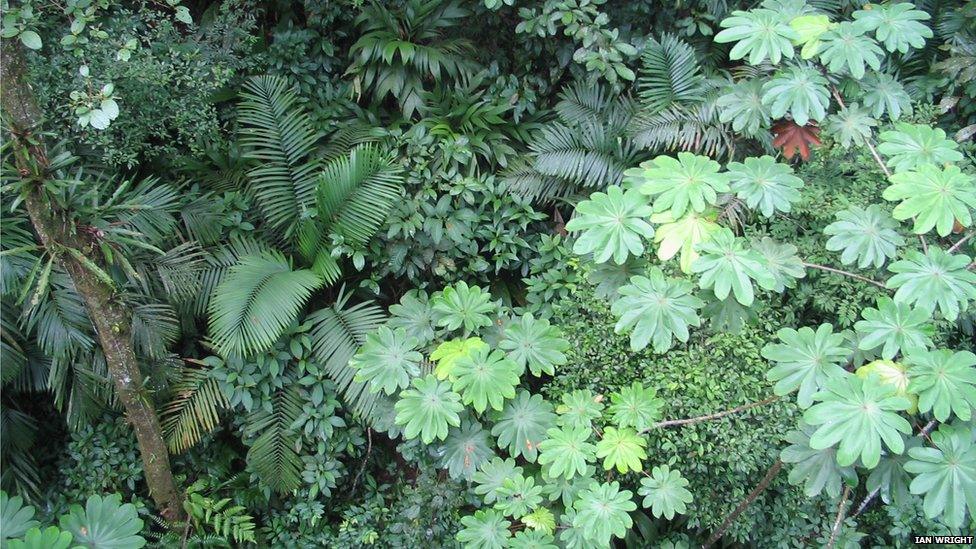Clues to why leaves come in many sizes
- Published

Rainforest canopy, Panama
The huge variety of leaves in the plant kingdom has long been a source of wonder and fascination.
The leaves of a banana plant, for instance, are about a million times bigger than the leaves of heather.
The conventional wisdom is that leaf size is limited by the balance between how much water is available to a plant and the risk of overheating.
However, a study of more than 7,000 plant species around the world suggests the answer may be more complex.
"A banana leaf is able to be so huge because bananas naturally grow in places that are very hot and very wet," said Ian Wright of Macquarie University in Sydney, Australia.
"大象传媒 shows that in fact that if there's enough water in the soil then there's almost no limit to how large leaves can be."
He says this is only part of the puzzle of leaf size.
"The other part is about the tendency for larger leaves to freeze at night," Dr Wright explained.
"And, you put these two ingredients together - the risk of freezing and the risk of overheating - and this helps understand the pattern of leaf sizes you see across the entire world."
Large palm leaf
Small leaves of a species in the genus Correa
There are hundreds of thousands of plant species on the planet, from tiny alpine plants to massive jungle palms.
Their leaves vary in area from less than 1 square millimetre to greater than 1 square metre.
Large-leaved plants predominate in tropical jungle - something that was noted as early as the 19th Century. Meanwhile, small-leaved plants thrive in arid deserts and at high latitudes.
Some decades ago, scientists realised that variability in leaf size was related to water and temperature. They proposed that the limit to leaf size was set by the risk of overheating.
Thus, when rainfall is high, plants can get away with having larger leaves.
The new research, published in the journal Science, suggests this idea applies only in certain regions of the globe.
"There were some pieces in this puzzle that were clearly missing," Dr Wright told 大象传媒 News.
"We came up with a new framework to model the way leaves should vary in their temperature, in the relationship to the site climate.
"What we've been able to show is over perhaps as much as half the world the overall limits to leaf size are much more set by the risk of freezing at night than the risk of overheating during the day."
Photosynthesis
The study sheds new light on how plants might adapt in a warming world.
Photosynthesis is the most fundamental plant process, whereby sunlight is used to react carbon dioxide with water to produce glucose and oxygen.
Temperature, carbon dioxide concentration and light intensity are factors that can limit the rate of photosynthesis.
"With a better understanding of photosynthesis - and the role of leaf size in this - we should be able to do a better job in predicting how the different vegetation types may shift in relation to climate change and also how individual species may be more or less viable under new climate types in the future," said Dr Wright.
Follow Helen on .